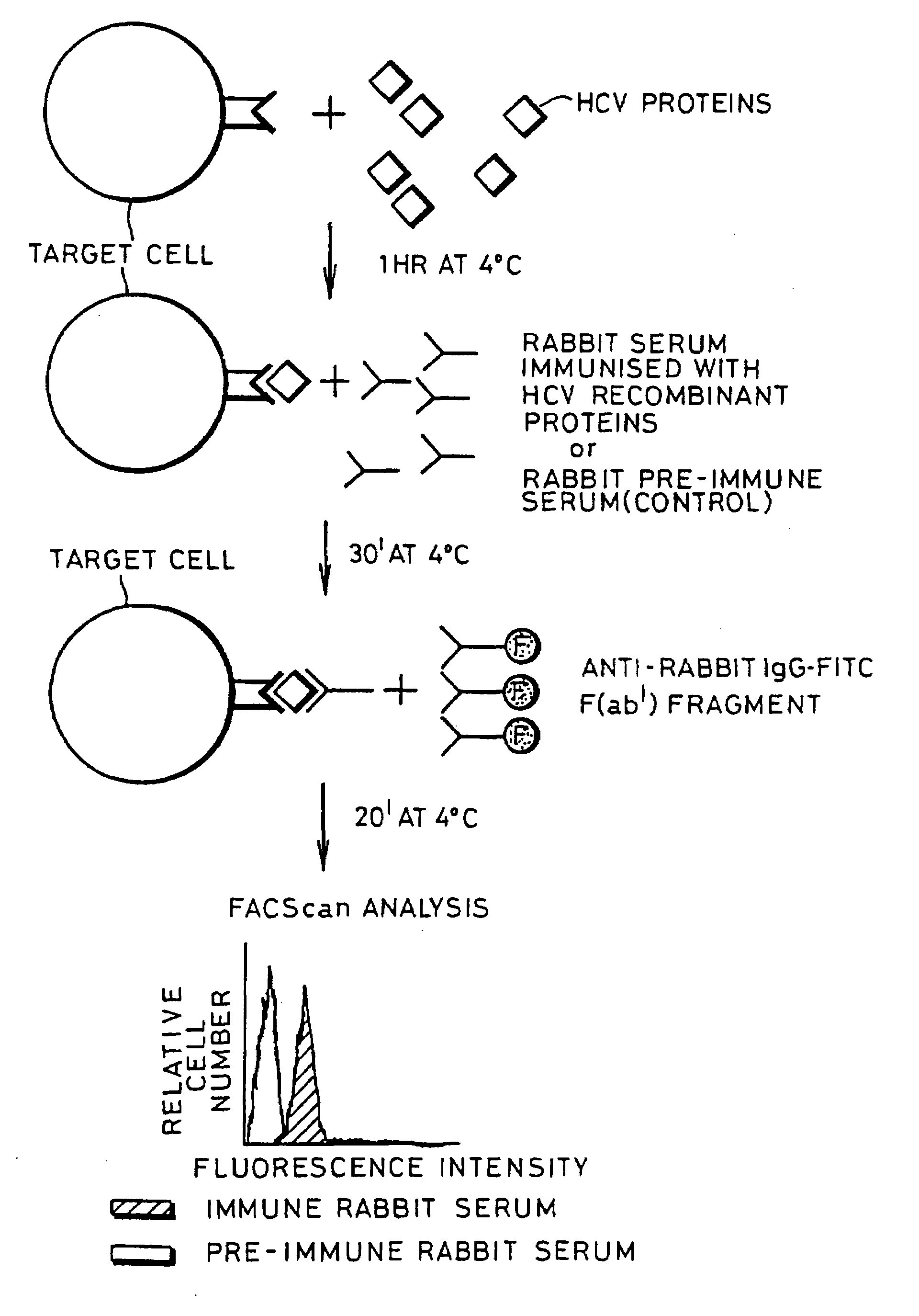Assay to detect HCV receptor binding
a technology of hcv receptor and assay, which is applied in the field of assay to measure the binding of hcv receptor, can solve the problems of hampered assessment of protective antibody responses to hcv
- Summary
- Abstract
- Description
- Claims
- Application Information
AI Technical Summary
Benefits of technology
Problems solved by technology
Method used
Image
Examples
example 1
Binding Assay
[0076]A schematic representation of a binding experiment is shown in FIG. 1 which shows the separation achieved by flow cytometric analysis.
[0077]An experiment was performed with the aim of measuring the ability of HCV protein to bind to various cell types which should have the putative HCV receptor.
Experimental Protocol
[0078]Indirect immunofluorescence experiments were performed to assess the ability of HCV envelope proteins to bind to Molt-4 cells, which is a human T-cell lymphoma that has been reported to allow a low level of HCV replication in vitro (13).
[0079]Cells (108 / well) Molt-4 were pelleted in 96 U-bottom microplates by centrifugation at 200×g for 5 min at 4° C. 20 μl of HCV proteins diluted in PBS at different concentrations (from 10 μg / ml to 0.001 μg / ml) were mixed with the pellet of Molt-4 cells and incubated at 4° C. for 1 hr. Non-bound HCV proteins were removed by two centrifugations in PBS at 200×g for 5 min at 4° C. Cells were subsequently incubated fo...
example 2
Neutralisation Assay
[0088]A schematic representation of a neutralisation assay according to the invention is shown in FIG. 4.
Experimental Protocol
[0089]Cells (105 / well) from were pelleted in 96 U-bottom microplates by centrifugation at 200×g for 5 min at 4° C. 20 μl of CHO / E2715 (0.5 μg / ml PBS) were mixed with various dilutions of sera from humans, chimpanzees or rabbits that are either infected with HCV or have been immunized with HCV recombinant proteins. After incubation at 4° C. for 1 hr, Molt-4 cells were added and incubated for 1 hr at 4° C. Non-bound HCV proteins and antibodies were removed by two centrifugations in PBS at 200×g for 5 min at 4° C. Cells were subsequently incubated for 30 min at 4° C. with 1 / 100 dilution of sera, from the same species of the neutralizing serum, from animals that have been immunized with HCV-envelope recombinant proteins or the corresponding pre-immune sera as control. Revealing the binding with antibodies from the same species of the neutraliz...
PUM
| Property | Measurement | Unit |
|---|---|---|
| pH | aaaaa | aaaaa |
| pH | aaaaa | aaaaa |
| concentrations | aaaaa | aaaaa |
Abstract
Description
Claims
Application Information
 Login to View More
Login to View More - R&D
- Intellectual Property
- Life Sciences
- Materials
- Tech Scout
- Unparalleled Data Quality
- Higher Quality Content
- 60% Fewer Hallucinations
Browse by: Latest US Patents, China's latest patents, Technical Efficacy Thesaurus, Application Domain, Technology Topic, Popular Technical Reports.
© 2025 PatSnap. All rights reserved.Legal|Privacy policy|Modern Slavery Act Transparency Statement|Sitemap|About US| Contact US: help@patsnap.com



